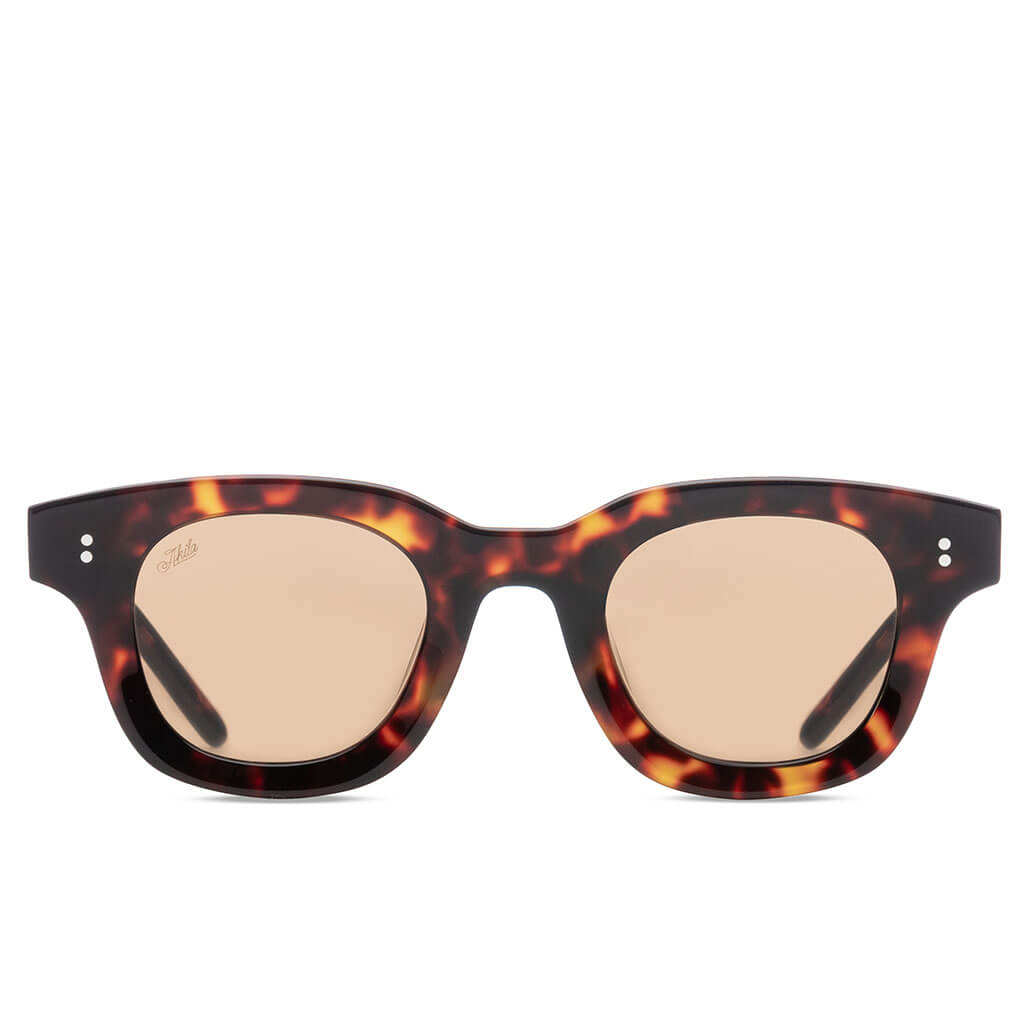


Sunglasses aren't always sold sized, meaning they come without an official small, medium or large. In most glasses, they are the long shaft that stretches to the ear and is connected to a temple tip that curves behind the ear (holding the glasses in place). These keep the front of the frames (which hold the lenses) from falling off your face. Their frames don't need rivets at all, but their presence implies a polished finish - and quality craftsmanship - even if they're the cheapest pair you could find. Others use the tradition as a form of decoration. Some come barred together, hence why you'll see a rectangular plate out front instead of disconnected dots. There are a set on either side of the frame when you're looking at them straight on and sets on both arms, by the temples. Rivets are clustered in sets of two or three, meaning eight or 12 in total. Rivets are then driven into the frame following the tenons' formation - they're the decorative items you see on the front (leaves, arrows, bars, etc.) These stack together - the stacking parts are called charniers - and get secured using a vertical screw. Most acetate or full-frame glasses, which are the type that require front-facing rivets, are put together using tenon hinges. Polarized lenses typically cost more than unpolarized ones. Polarization is especially useful for people who do a lot of sunny highway driving, daytime fishing, skiing, mountaineering or hiking in snowy areas.

This works by only allowing light that enters the lenses vertically - unreflected light, direct from a light source - to enter through, blocking the vast majority of light that reflects off horizontal surfaces like bodies of water, large stretches of pavement or fields of snow. Polarized lenses have a special film that helps them to reduce glare - that is, bright reflected light. This is acetate made from bio-based materials - cotton, wood pulp, cereals, beet and sugar cane, for example. In recent years, the material has been replaced by less-expensive nylon frames. It is made from a polymer derived from wood pulp or other natural fibers and is both glossy and transparent. This synthetic material - also known as cellulose acetate - was first used for eyewear in the late ‘40s.
#Akila apollo full
See below for full details for each face shape. If you're rounded, go angular, with something square or oversized, and so on and so forth. The goal is to accentuate your best features, and in general, the best way to do that is to wear frames that contrast your face's shape slightly.
#Akila apollo how to
*shrug emoji* How to Pick the Right Frame for Your Face Shape Still not 100 percent sure which shape your face is? There are apps - like Find Your Face Shape - that can help you, but it's up to you whether you want a random app to own a comprehensive scan of your face made using your front-facing camera.

dimensions, what to look for, what one looks like), and offer recommendations that will highlight your best qualities. Face Shapesīelow, we break down the more technical definition of each popular face shape (i.e. It may also be helpful to use a picture to help you better visualize the shape. Not sure what your face shape is? Look at yourself in the mirror and decide if your face is round, square, oblong, heart, diamond or triangular.


 0 kommentar(er)
0 kommentar(er)
